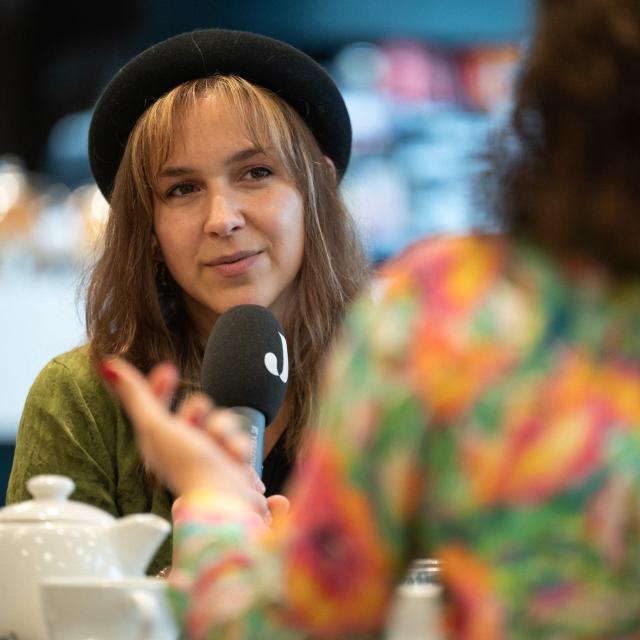
Listen to this article
The new year is a fitting opportunity to look back on the last twelve months. For the Journal team, this means reflecting on more than 600 published articles and podcasts, as well as at least three times as many conducted interviews. Each team member has selected the contribution that has marked them the most in 2023.
I've known Nina for years; back in February, she sent me a picture from a tattoo meet-up in 2016, where I met her in person for the first time. Nina, the heavily tattooed cool girl with a mega mane of curls, pretty direct, with a loud but bright voice, tough but emotional at the same time. A mum's kid like me, but in soldier's uniform and with a hard line when it came to the posts in the Facebook tattoo group she managed – that's how I got to know her back then. She liked parties, relaxed evenings with friends and never minced her words, neither in her posts nor in real life.
At some point, however, Nina's behaviour on social media changed: her posts became less frequent and she posted more and more pictures from hospitals or with walking aids. Nobody really knew what was going on, not even herself. Lyme disease? A mental illness? In any case, when we first met, Nina was walking with crutches, was in constant pain and could no longer do her job. It took over a year to find out what was wrong with the then 26-year-old: she had been bitten by desert lice during her holiday in Egypt and contracted an extreme form of meningitis.
The treatment lasted two years, during which Nina travelled from hospital bed to wheelchair, from local clinics to foreign experts and had to endure countless painful lumbar punctures. What finally helped her was a cerebral shunt, i.e. a small computer inserted in her head, which drains the fluid caused by the inflammation and causing constant pressure via a tube into her liver, allowing Nina to lead a largely normal life again.
Nina's story touched me so deeply not only because of the personal relationship I have with her, but also because despite everything that happened to her, she never gave up and is now more alive than ever. But I also chose the article for other reasons: because it tells of a mother's love for her daughter, who would no longer be here today without her, and because it shows how lucky we are to live in the West. Every year, 300,000 people worldwide die from meningitis. In Luxembourg, there have "only" been five deaths in the past ten years and Nina, with her severe consequences, is one of a minority.
"But I also chose the article for other reasons: because it tells of a mother's love for her daughter, who would no longer be here today without her, and because it shows how lucky we are to live in the West."
However, if you fall ill with meningitis in other, less medically equipped countries, for example in the meningitis belt named after the disease, which stretches across Africa from Senegal to Ethiopia, the chances of recovery are worse than here. So I chose the article about Nina's story because it tells of a fate on two levels: on a personal level, the micro level. And on a more global level, the macro level, which sheds a completely different light on an illness that is usually hardly worth mentioning for us and is proof that not everyone has the same chances in life, but also for life, as we do.
I dedicate this annual review to Nina, the young power woman who infects us with her joie de vivre every day via Insta stories, to her mother, who never gave up on her daughter despite her horror diagnosis, but also to all those around the world who fall ill with meningitis every day and don't know whether they will still be around tomorrow to tell their story. Nina tells hers every year to sensitise people to be mindful and never take life for granted.

Nina Van Maris




